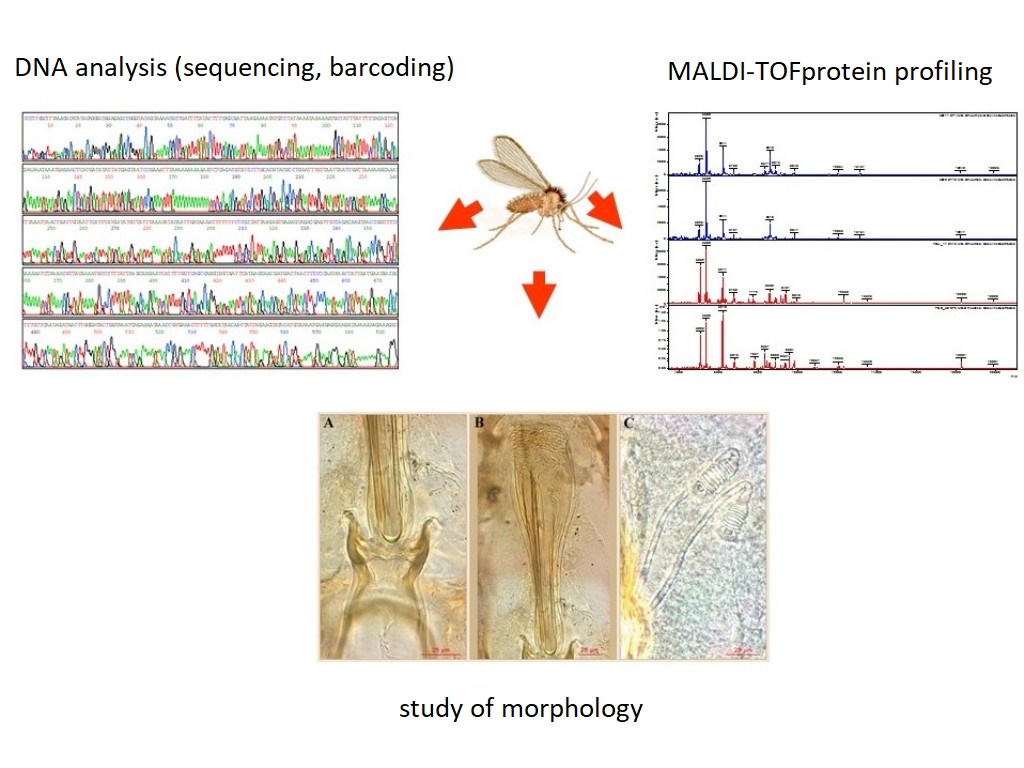Sand flies are key vectors of parasitic protozoans of the genus Leishmania, some of which are causative agents of human leishmaniases.
To fully understand a transmission cycle in a focus of leishmaniasis and possibly disrupt this cycle, it is of paramount importance to conclusively identify
sand fly species present in the focus and assess their role in transmission. Species identification and taxonomy of sand flies is complicated by the fact
that analysis of distinctive morphological characters requires expertise in assessment of minute and often obscured characters.
This situation opens door for deployment of molecular methods to complement traditional morphology in integrative taxonomical approach.
We use DNA sequencing of nuclear and mitochondrial markers including DNA barcoding as well as MALDI-TOF protein profiling which we pioneered for sand fly taxonomy.
Our research focuses on:
- systematics of phlebotomine sand flies by methods of integrative taxonomy, combining morphological and molecular approaches.
- feeding preferences of vectors of human leishmanioses by molecular methods (RFLP, sequencing analyses, MALDI-TOF peptide mapping).
- typing of sand flies by DNA barcoding and mass spectrometry (MALDI-TOF protein profiling).
- mapping sand fly distribution and potential emergence in Europe (field surveys in the Czech Republic, Austria, Slovakia and other neighbouring countries) within projects Vectornet and CLIMOS.
- transmission cycles of leishmaniases in region of Maghreb (Algeria, Morocco, Tunisia) and in emerging foci in southeast Asia.
- characterization of molecular markers for typing of cryptic sand fly species within species complexes.
